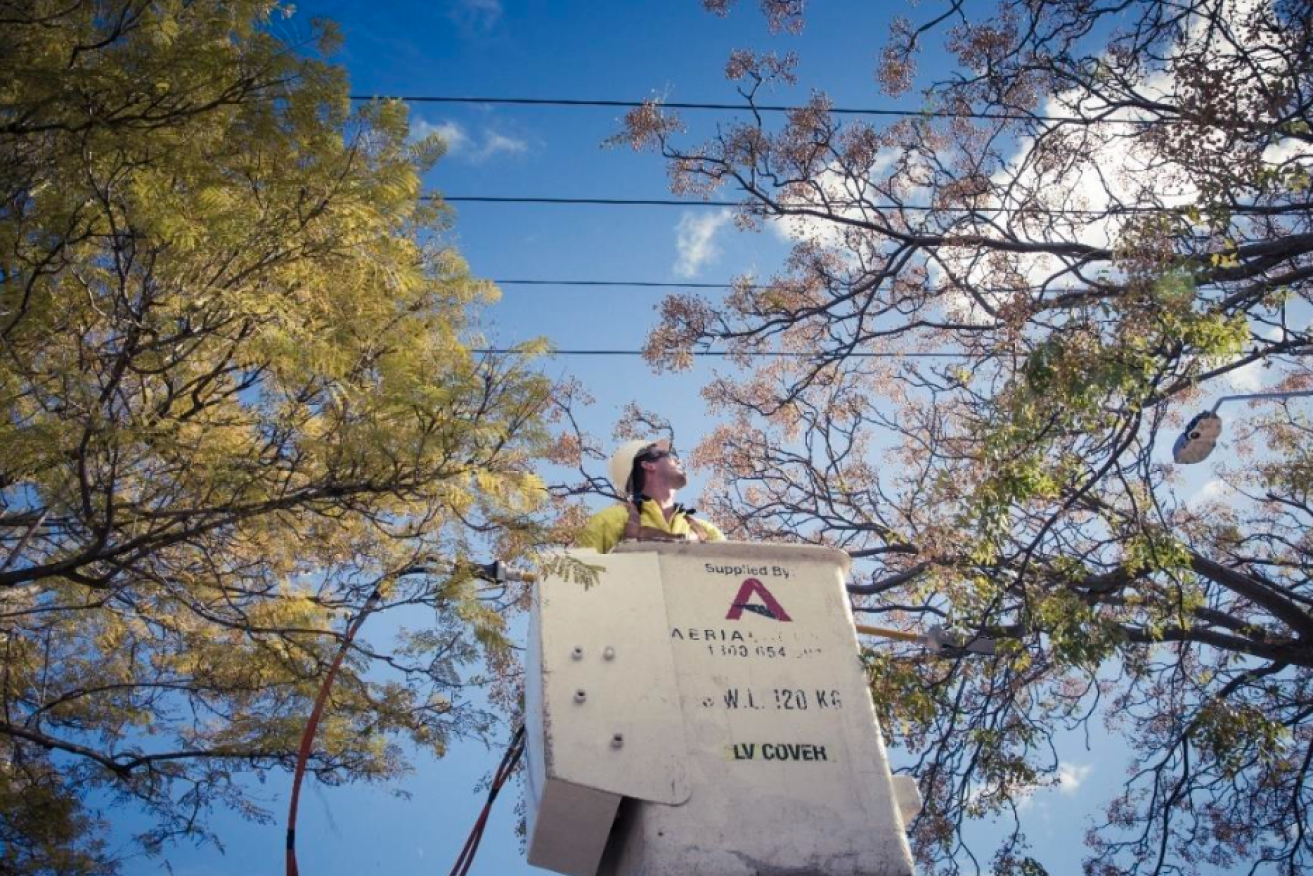High tension: Electricity network arcs up over trees
SA Power Networks spends $42m a year trimming branches near powerlines and wants tougher rules because “large numbers of non-compliant” trees are being planted by councils.


SA Power Networks says vegetation remains a "significant source of power outages" across the state, particularly in the eastern suburbs. Photo: SA Power Networks
In a submission to the parliamentary inquiry into Adelaide’s urban forest, SA Power Networks (SAPN) said managing trees near power lines has become its “largest operational cost” each year at $42m.
The utility provider, which has been criticised during the inquiry for its role in felling trees, argued it is managing “generations of inappropriately-planted unsuitable trees around powerlines”.
“There is a considerable tension between the desire for improving local amenity and the desire for reliable and safe power supply,” SAPN’s submission said.
“That tension is reflected in the scale of our legislated vegetation management program which is the biggest single operational cost for the business – a cost that is wholly borne by electricity customers.
“We believe much of that cost has been built into our annual budget because of the planting of inappropriate trees in and round powerlines over the past 40-50 years.”
SAPN said the planting of trees too close to power lines remained a “significant issue” and argued it would likely require “stronger intervention and policing” by the state government and the Office of the Technical Regulator, which regulates electricity safety standards.
“Some councils continue to plant and nurture vegetation which is contrary to the principles of vegetation clearance primarily in the Prescribed (metropolitan Adelaide/large regional centres) and Non-Bushfire Districts,” SAPN said.
“This is contributing to the costs being borne by electricity customers and rate payers.”
SAPN also said it has undertaken a “comprehensive education and consultation program” with the local government sector since 2016, but the problem persists.
“Unfortunately, we are identifying large numbers of non-compliant new plantings primarily in some metropolitan councils,” it said.
“The associated level of safety and reliability risk continues to increase, as does the cost to customers.
“Further, the negative impact on amenity continues to grow, as non-compliant species must be cut in line with legislated clearance requirements.”
SAPN undertakes tree trimming on an annual or two-year basis in bushfire risk districts, which have more stringent vegetation clearance requirements.
In non-bushfire districts, tree trimming takes place in longer, three-year cycles.

A diagram showing power line clearance requirements in bushfire risk areas. Image: SAPN
Several stakeholder submissions to the tree canopy inquiry have criticised SA Power Networks for its role in vegetation management, with some councils calling on the state government to rein in the utility’s tree removal powers.
Labor MP for Waite Catherine Hutchesson, whose electorate takes in the southeastern foothills around Belair, Hawthorndene and Craigburn Farm, submitted that roadside trees “are often decimated by SA Power Networks” and more consideration should be given to undergrounding power lines in bushfire risk areas.
Similarly, the City of Marion argued that a “conflict between trees and utilities” is restricting efforts to plant trees on public land, while the City of Burnside said it faced “challenges with maintaining and growing our tree canopy” due to the maintenance of local electricity infrastructure.
But SAPN said vegetation clearance is its “highest corporate risk” due to the safety issues that arise when trees fall onto power lines.
“Vegetation is a significant source of power outages, particularly in the metropolitan area and particularly in the more vegetated areas of our eastern suburbs,” it said.
“At the same time, the interaction of powerlines with trees has inherent safety risks. Large tree and tree limb falls onto live powerlines creates a significant hazard and one that often requires an immediate response from emergency services as well as SA Power Networks crews.
“In metropolitan settings, people are at risk of electric shock or electrocution if they come into contact with live powerlines.
“In regional areas, particularly in high bushfire risk areas, tree falls are responsible for a significant number of fire starts.”

Vegetation has “historically” been responsible for 50 per cent of power outages in the eastern suburbs, according to SAPN. Photo: Tony Lewis/InDailyPhoto: Tony Lewis/InDaily
SAPN has previously been subject to class action lawsuits for bushfires sparked by vegetation near electricity infrastructure.
In 2021, victims of the 2019 Cudlee Creek bushfire – which was likely sparked when a 24-metre pine tree collapsed onto an 11-kilovolt powerline – launched a class action seeking $150m in damages from SAPN.
The Office of the Technical Regulator cleared SAPN of any wrongdoing, finding the tree that fell was further than the minimum clearance distance from the powerline.
A similar class-action was launched in June 2020 against SAPN for their alleged role in a November 2019 bushfire in Yorketown. SAPN settled the case for a reported $2.25m.
SAPN said around 80 per cent of its vegetation management costs went towards bushfire risks areas – where there are around 415,000 pole-to-pole power lines – but added that urban trimming “remains a significant cost to consumers and one that we have the capacity to reduce through sensible policy arrangements”.




